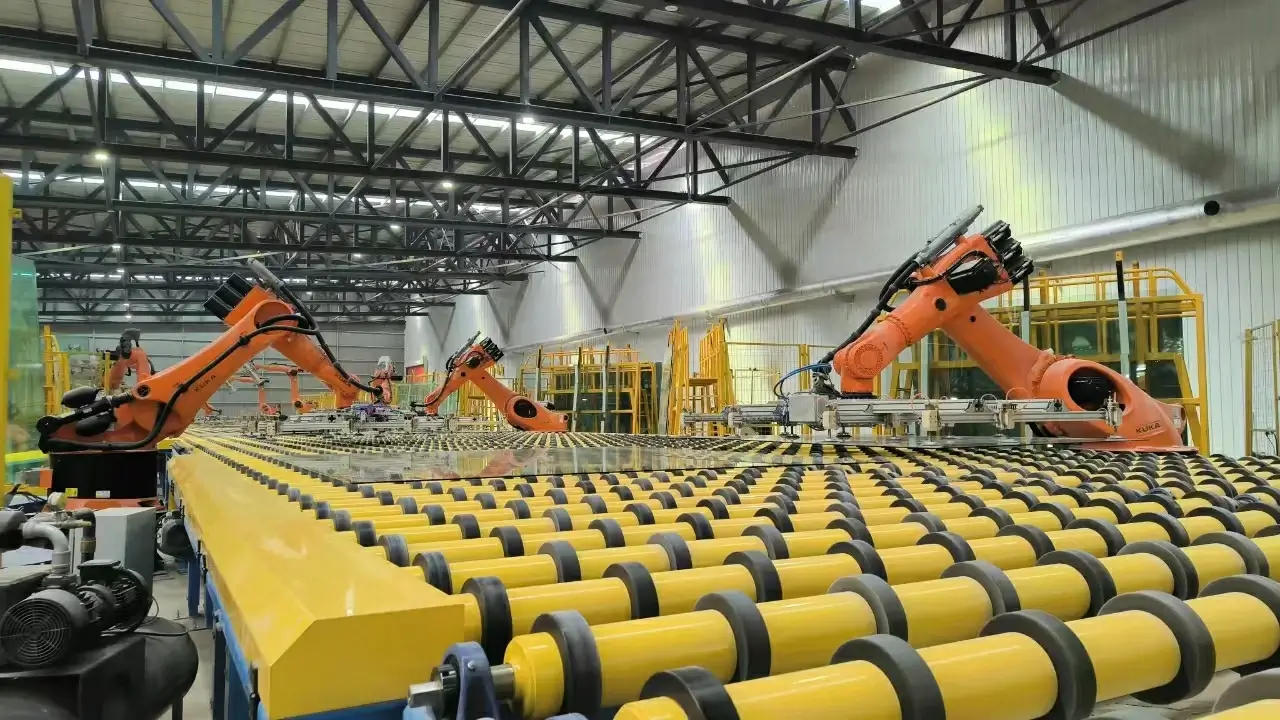Mirror Reflective Glass A Window to the Soul
Mirror reflective glass, a term that may seem unfamiliar to many, is an innovative material that has revolutionized the world of design and architecture. It is a type of glass that possesses unique properties, allowing it to reflect images like a mirror while also providing transparency. This fascinating material has captured the imagination of designers and architects alike, leading to its widespread use in various settings.
The science behind mirror reflective glass is based on the principle of light reflection. When light strikes the surface of the glass, it is reflected back in the same direction from which it came. This creates the illusion of a mirror, making the glass appear opaque and reflective. However, when viewed from the other side, the glass remains transparent, allowing one to see through it clearly.
One of the most significant advantages of mirror reflective glass is its versatility. It can be used in a variety of applications, from architectural design to interior decoration. Architects often incorporate this glass into their designs to create stunning visual effects. For instance, they may use it as exterior cladding for buildings or as part of a facade system. In doing so, they can create a dynamic play of light and shadow, adding depth and texture to the building's appearance.
Interior designers also find mirror reflective glass to be incredibly useful
Interior designers also find mirror reflective glass to be incredibly useful

Interior designers also find mirror reflective glass to be incredibly useful
Interior designers also find mirror reflective glass to be incredibly useful
 mirror reflective glass
mirror reflective glass. They may use it as decorative elements within a room or as partitions between spaces. By using this glass, designers can create private areas within open floor plans without sacrificing natural light. Additionally, mirror reflective glass can be used in furniture design, such as coffee tables or console tables, adding an element of elegance and sophistication to any space.
Another advantage of mirror reflective glass is its energy-efficient properties. Because it reflects sunlight away from a building's interior during hot summer months, it helps reduce cooling costs by lowering indoor temperatures. Conversely, during cold winter months, it helps retain heat inside a building by reflecting it back into the interior. This makes mirror reflective glass an excellent choice for sustainable building projects aimed at reducing energy consumption and carbon footprint.
In conclusion, mirror reflective glass is a remarkable material that offers both aesthetic appeal and practical benefits. Its ability to reflect images like a mirror while remaining transparent makes it an ideal choice for various applications in design and architecture. As technology continues to advance, we can expect even more innovative uses for this fascinating material in the future.


 Interior designers also find mirror reflective glass to be incredibly useful
Interior designers also find mirror reflective glass to be incredibly useful
Interior designers also find mirror reflective glass to be incredibly useful
Interior designers also find mirror reflective glass to be incredibly useful mirror reflective glass. They may use it as decorative elements within a room or as partitions between spaces. By using this glass, designers can create private areas within open floor plans without sacrificing natural light. Additionally, mirror reflective glass can be used in furniture design, such as coffee tables or console tables, adding an element of elegance and sophistication to any space.
Another advantage of mirror reflective glass is its energy-efficient properties. Because it reflects sunlight away from a building's interior during hot summer months, it helps reduce cooling costs by lowering indoor temperatures. Conversely, during cold winter months, it helps retain heat inside a building by reflecting it back into the interior. This makes mirror reflective glass an excellent choice for sustainable building projects aimed at reducing energy consumption and carbon footprint.
In conclusion, mirror reflective glass is a remarkable material that offers both aesthetic appeal and practical benefits. Its ability to reflect images like a mirror while remaining transparent makes it an ideal choice for various applications in design and architecture. As technology continues to advance, we can expect even more innovative uses for this fascinating material in the future.
mirror reflective glass. They may use it as decorative elements within a room or as partitions between spaces. By using this glass, designers can create private areas within open floor plans without sacrificing natural light. Additionally, mirror reflective glass can be used in furniture design, such as coffee tables or console tables, adding an element of elegance and sophistication to any space.
Another advantage of mirror reflective glass is its energy-efficient properties. Because it reflects sunlight away from a building's interior during hot summer months, it helps reduce cooling costs by lowering indoor temperatures. Conversely, during cold winter months, it helps retain heat inside a building by reflecting it back into the interior. This makes mirror reflective glass an excellent choice for sustainable building projects aimed at reducing energy consumption and carbon footprint.
In conclusion, mirror reflective glass is a remarkable material that offers both aesthetic appeal and practical benefits. Its ability to reflect images like a mirror while remaining transparent makes it an ideal choice for various applications in design and architecture. As technology continues to advance, we can expect even more innovative uses for this fascinating material in the future.